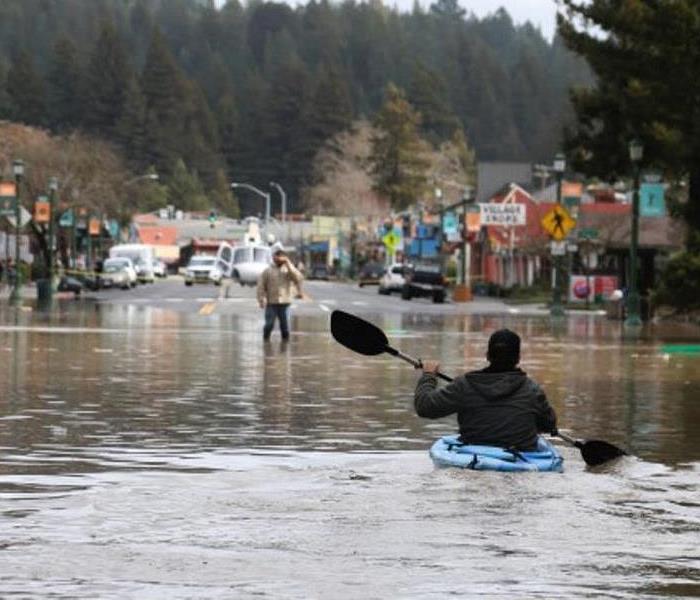Archived Storm Damage Blog Posts
How To Protect Your Business From Rain Damage
8/12/2022 (Permalink)
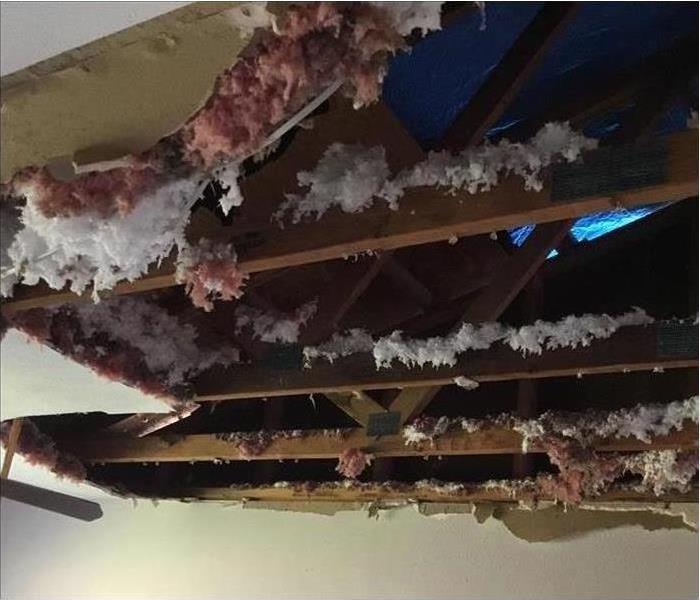 Collapsed ceiling from roof destruction in Waterford Estates, TX.
Collapsed ceiling from roof destruction in Waterford Estates, TX.
Prevent Rain Damage To Your Business
Rain damage to your Waterford Estates, TX, business can be a major problem but is often preventable. By maintaining the structural integrity of your building’s exterior, you can minimize potential damage from rain and storms.
Prevention
When it comes to protecting your commercial building from storm damage, routine maintenance is key. Keeping the structure in good repair prevents weak spots that are vulnerable to strong winds and heavy rains. All buildings have an envelope, the barrier between the inside and outdoors. The building envelope has several components, including:
- Roof
- Foundation
- Walls
- Windows
- Doors
- Seals
Have the entire building envelope inspected at least once a year and address any problems quickly. Your contractor can let you know if you need more frequent inspections.
In addition to structural issues, be sure to watch out for landscaping dangers as well. Keep limbs trimmed and make sure sick or weak trees are cleared from the property.
Cleanup
Even properly maintained buildings can suffer storm and rain damage. Fortunately, quick action can prevent further problems. If water inundates your building, the first step after ensuring everyone is safe is removing the standing water and remaining moisture. If possible, dry the property out within 24 hours to prevent black mold and other fungal growth.
After the property is dry, it should be thoroughly cleaned. Flood water often harbors bacteria and other contaminants that can linger even after the water has been removed. A certified restoration service has the knowledge to select the best cleaning product and technique for every affected item and let you know which items should be replaced rather than restored. After everything is dry and sanitized, damaged items can be repaired.
The weather at your business site may be unpleasant or unpredictable, but there are ways you can protect your commercial property from storm and rain damage. Perform routine inspections, keep the building envelope in good repair and clean up any water damage as soon as possible to prevent mold growth.
The Pros and Cons of Flood Insurance
7/19/2022 (Permalink)
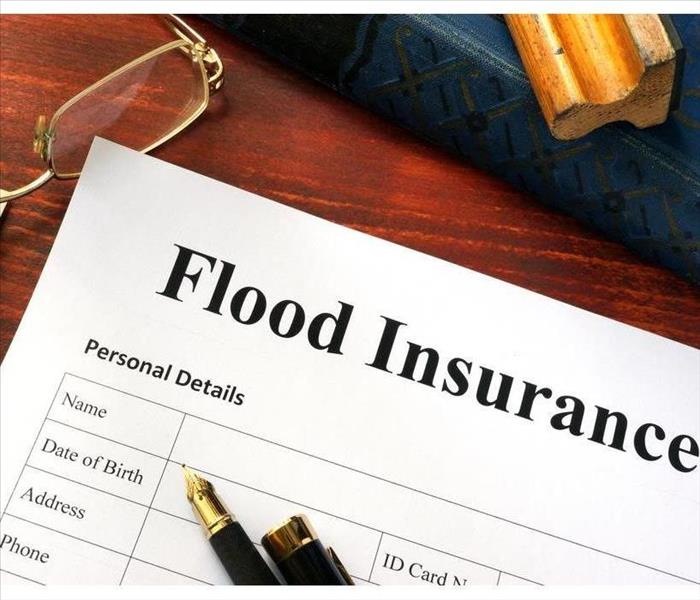 It is important to purchase flood insurance for your business.
It is important to purchase flood insurance for your business.
For many companies, the decision on whether or not to buy flood insurance is a difficult one. After all, most companies have a strong commercial insurance policy that covers many perils. In most cases, though, damage from a flood will not be covered by the regular policy. For insurance purposes, a flood is described by FEMA as a "temporary condition of partial or complete inundation of 2 or more acres of normally dry land area or of 2 or more properties..." In some situations, the decision of buying flood insurance is made for business owners. If the owner has a federally insured mortgage and the property is situated in a flood plain, a flood policy is mandatory.
The Pros of Flood Insurance
Most business owners purchase insurance for floods from the National Flood Insurance Program. This federal program provides payments for floods in South Garland, TX, and elsewhere in the U.S. It provides the following benefits to policyholders:
- Peace of mind
- Payments of up to $500,000 for structures
- Payments of up to $500,000 for belongings
- Prospects of faster recoveries for businesses
- Transfer of some of the risks to the government
Even in years without a damaging flood, the NFIP allows business owners to better plan expenses. By reducing uncertainty, a company might not need to set aside large amounts of discretionary funds.
The Cons of Flood Insurance
Some business owners might feel that paying for commercial insurance and flood insurance is too expensive. They might also feel that the payment limits on federal flood insurance are too low. In any event, floods across the U.S. can often be devastating. They also often require the services of a professional storm mitigation company. A fast response by experienced professionals can limit damage to a building and its belongings. Vigorous action by trained technicians is another way a company can quickly rebound from the expenses associated with storms.
Common Sewage Backup Sources
5/24/2022 (Permalink)
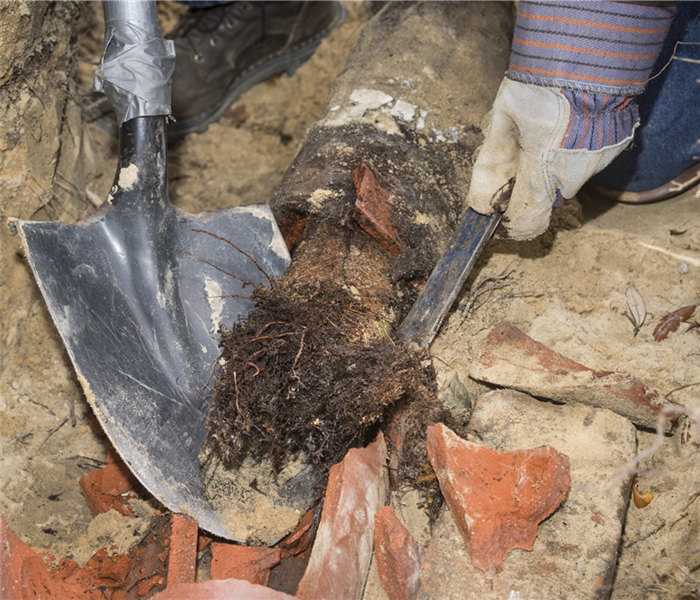 Tree roots growing in the sewer line are a common reason for sewer backup problems.
Tree roots growing in the sewer line are a common reason for sewer backup problems.
Sources of Sewage Backup
A sewage issue in your Club Creek, TX, home is unpleasant and often requires the assistance of a water damage remediation and restoration company to provide a proper sewage cleaning. Before having to make that call, you may wonder why it is happening in the first place. Knowing the common culprits and taking measures to eradicate them may help minimize the risk.
A Clogged Pipe and Other Culprits
Since all the plumbing in your home leads right to the sewer line, it opens the door to many potential culprits. The most common sources of trouble include:
- Tree roots that have grown into the line and caused cracks to form
- Pipes that have collapsed, cracked or misaligned
- Clogs that are created by grease or other items that shouldn’t have gone down the drain
- Older pipes, such as clay or iron, that have deteriorated or corroded
- The seals on pipes that have deteriorated
Prevention Tips
While it may not be possible to ensure sewage cleaning won’t eventually be required, there are prevention tips that may help minimize the risk:
Avoid flushing inappropriate items down drains, such as grease and food waste.
Ensure that only toilet paper and waste get flushed to prevent a clog or toilet overflow.
Check the water pressure. If it is too high, it may lead to a leak faster.
Every two or three years, have a plumber clean and unclog the sewer line.
Insulate pipes to reduce the chances of them freezing and bursting.
Keep exposed pipes clear of objects to avoid the joints loosening.
Fix any water issue immediately before it gets worse.
Once you have experienced having to perform sewage cleaning, there's a good chance you don't want to have to do it again. Understanding the common reasons it happens makes it easier to take steps to avoid the issue.
3 Things You Need To Know About Big Storms and Insurance Coverage
4/5/2022 (Permalink)
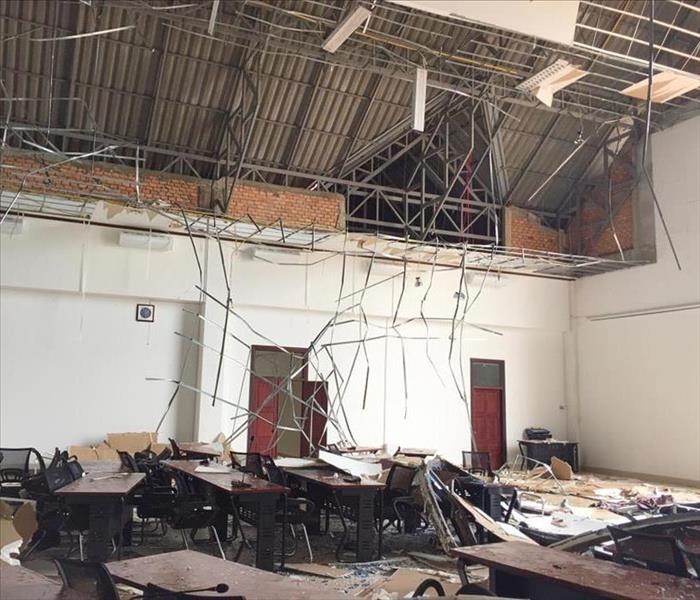 Commercial storm damage in Duck Creek, TX.
Commercial storm damage in Duck Creek, TX.
Ways To Protect Your Business In The Event Of Severe Weather
As a business owner in Duck Creek, TX, you know that big storms, like hurricanes, are a threat to your commercial property. If you've purchased a comprehensive insurance coverage plan, it can be tempting to assume that that truly means anything and everything is covered under that policy. However, most commercial policies have standard exclusions, and most often, those exclusions apply to hurricanes, earthquakes, and flood damage. Without the appropriate riders (in other words, additions to your already comprehensive policy), you may find that you are responsible to pay out of pocket for thousands of dollars in damages. Here are three things you need to know in order to protect your business and your bottom line.
1. Choose the Right Riders
After you've reviewed your insurance coverage, talk to your agent about the riders that will close the gaps in your standard policy. If hurricanes are a threat in your area, learn about the types of hurricane riders that are available. There are also riders for flood damage, which may be necessary in addition to a hurricane policy, and for business interruption if you cannot continue to work due to damages.
2. Understand Your Deductible
Does your storm insurance have a percentage deductible or a traditional dollar deductible? The difference is important because a percentage deductible could have you on the hook for paying much more than a dollar deductible. Often insurance companies set these deductible levels, but there are some states that set them for certain types of plans.
3. Know Your Policy Triggers
For some storm insurance policies, a specific trigger event must occur in order to enable the coverage. The National Weather Service must declare a warning or a watch, name the storm, or define its intensity in order for that policy to be triggered. Knowing the triggers for your policy will prevent surprises as you work with a water damage restoration team to estimate damage costs.
While commercial insurance covers a lot, a specific storm insurance rider may be necessary to more fully protect your business in the event of severe weather.
3 Non-Sandbag Flood Protection Tactics
1/27/2022 (Permalink)
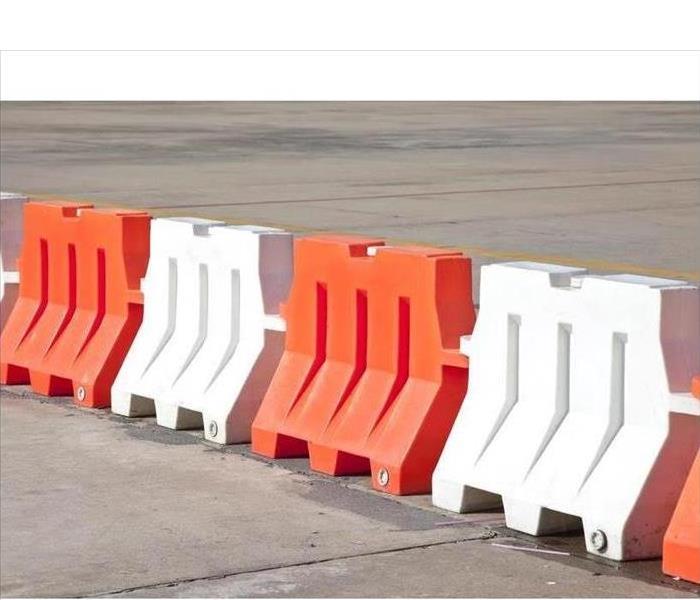 There are many options for flood control besides sandbags.
There are many options for flood control besides sandbags.
Different Types Of Options For Flood Protection
Flood protection measures are important for those in the path of a severe storm or hurricane. One commonly used defense tactic is the use of the sandbag. Sandbags are bags made of sturdy materials like burlap that are filled with soil or sand and used for fortification, counterweights, ballast and flood control. They can be placed together to create flood dams that block and divert the flow of floodwater, minimizing or preventing flood damage. However, sandbags do have disadvantages, including being easily contaminated, being labor-intensive to fill and being vulnerable to degradation from the sun and elements. The possible contamination from sewage, garbage and other toxic materials in floodwaters makes them hard to handle after the storm is over, meaning a professional cleanup service in Duck Creek, TX, often has to be called in. There are other options for flood control and protection besides using a sandbag. Here are three of them.
1. Water Gate
One option for defending against floods is water gates. Made of PVC, the lighter, self-inflatable water gates stabilize themselves by utilizing the pressure of the floodwaters. They are pricier than sandbags, but the cost is offset by many advantages, including:
- Easy and quick setup
- Lighter than sandbags
- No easily contaminated stuffing
- Reusable
- Effective at protecting against flood damage
2. Floodblock
Similar to Legos, floodblocks are self-filling crates padded with foam on the bottom. They can be stacked and interlocked like Legos to create walls and barriers. They are lightweight and simple to make and use.
3. Quick Dam
Quick Dams are also known as water barrier socks. They are available in many different sizes and have become increasingly popular for flood control in North America. They are similar to sandbags, except they have no sand. Instead, they are activated by contact with water, absorbing it.
While a sandbag serves well as a flood preparation tool, it does have its downsides. There are many options for flood control besides sandbags.
Can FEMA Help Repair Your Flooded Home?
1/14/2022 (Permalink)
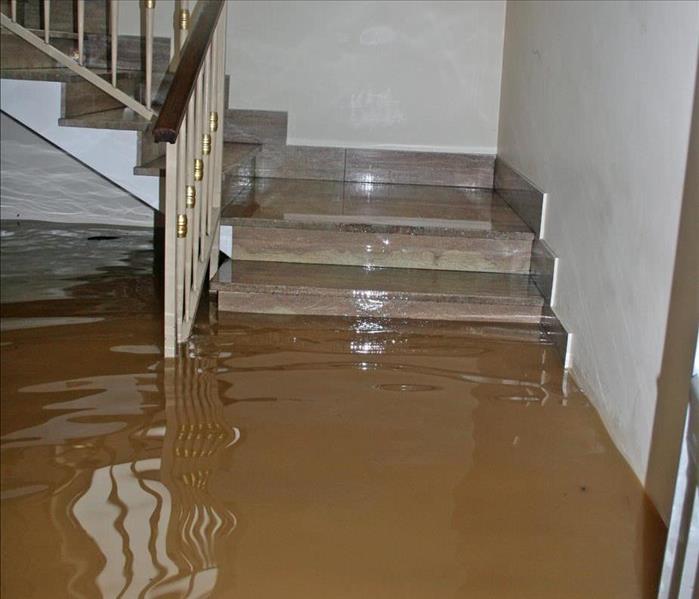 A flooded home in South Garland, TX.
A flooded home in South Garland, TX.
Can FEMA Help Repair Your Flooded Home?
A severe storm rolled through South Garland, TX, causing flooding. Your home suffered significant damage. You contacted your insurance company. Now what? FEMA, the Federal Emergency Management Agency, may be able to provide additional assistance.
Under its Individuals and Households Program, the agency can provide funds to assist with temporary housing costs, storm-related home repairs and other expenses. To receive aid, you must do the following:
- Meet eligibility requirements
- Complete an application
- Allow your home to be inspected
How Do You Apply for Assistance?
First, you need to determine if your county is included in the disaster declaration, a designation issued by the President. Individuals residing outside of specifically defined disaster areas are not eligible for FEMA assistance.
Everyone seeking aid must complete an application, either online, through the agency’s toll-free Helpline or at a Disaster Recovery Center. All applicants must be U.S. citizens, permanent residents or non-citizen nationals.
To prevent fraud, the agency will verify every applicant’s identity. Applicants will also be required to provide proof of ownership or occupancy of the damaged residence.
What’s Next?
After receiving your application, the agency will assign an inspector to conduct an onsite inspection of your home. The inspector will assess and document flood damage to your property to verify needed repairs. This vital information allows the agency to evaluate the assistance you may qualify for.
It is important to understand that any financial assistance received is intended to cover costs not covered by your insurance. Proper documentation of your flood-related insurance claims is part of the application process.
Once the inspection is complete, the agency will finalize your application and send written notice outlining the assistance you are eligible to receive. It will also provide specific instructions explaining how the funds should be utilized.
Victims of storm-related flooding face a daunting recovery process, often requiring extensive cleanup and restoration. Eligible individuals can, however, receive assistance from FEMA to alleviate some of the burden of this process.
What Are 3 Common Causes of Solar Panel Damage?
1/9/2022 (Permalink)
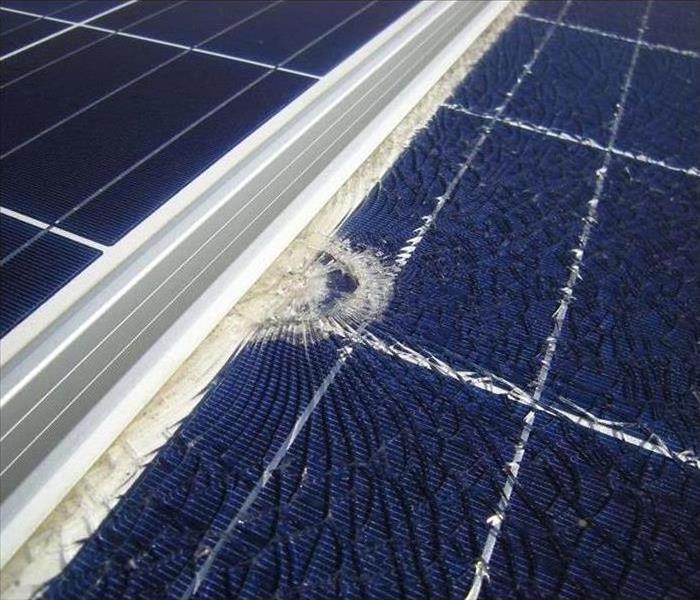 Solar panel damaged.
Solar panel damaged.
Three Common Causes Of Damage And How To Prevent Them
Though harnessing solar power for your Garland, TX, home has several benefits, you may have to deal with issues such as panel damage. This advanced equipment is also vulnerable to several environmental factors. Solar panels are still a great investment, so you should prepare to get the most out of yours.
1. Storms
Storms are the natural disasters most likely to do serious roof damage due to their combination of strong winds and precipitation. Your panels are built to resist impact, but you should still reduce the risk. Safeguard against hard rain and hail by installing smaller panels that are farther away from each other. Not only does this practice reduce the target area, but you also avoid the cost of replacing a larger panel just because it was partially hit. Contact emergency remediation specialists to treat any damage to the house itself.
2. Environmental Debris
Rain and hailstorms are not the only potential sources of panel damage. Other debris such as branches, leaves and dirt can impact the devices' functions. Even a small scratch can negatively impact the amount of energy the panels absorb. You can minimize debris from trees by keeping them away from the roof or trimming them. Perform the occasional cleaning with water and a cloth to remove other potential debris.
3. Wear and Tear
The combination of time, the elements and frequent use takes a toll on everything, even your panels. The constant presence of small dirt, wind and water can slowly damage your setup, which eventually disrupts performance. The inevitability of wear and tear is why you should have contractors inspect the solar panels and perform necessary maintenance. They can keep the system working in optimal condition and fix or replace any malfunctioning parts.
Using panels to obtain clean energy from the sun is a worthwhile investment. Prevent panel damage by anticipating the most frequent causes.
FAQs About FEMA Individual Assistance
12/3/2021 (Permalink)
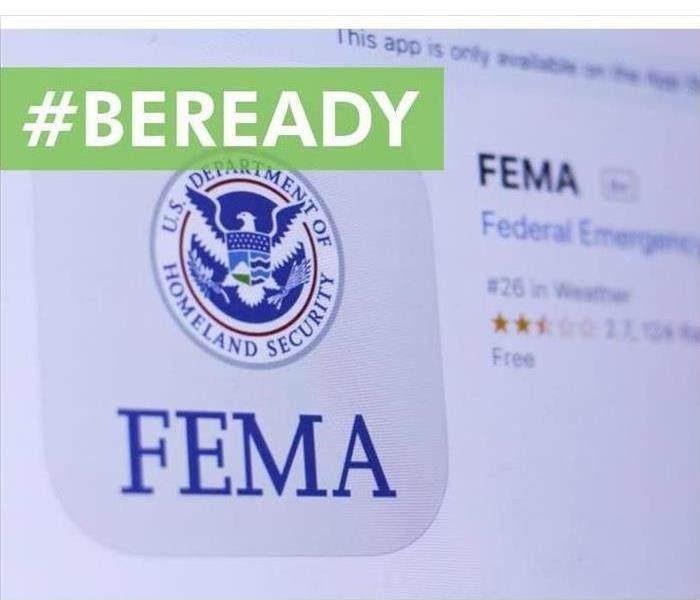 Get the FEMA app with weather alerts.
Get the FEMA app with weather alerts.
The FEMA Individual Assistance Program
Navigating the aftermath of a storm can be a stressful time, especially if you face a lot of damages to your home in Duck Creek, TX. Here are some frequently asked questions about the FEMA Individual Assistance program to make finding coverage for your home repair less taxing.
1. Will FEMA Rebuild a Home the Way It Was?
FEMA provides financial assistance and services for individuals who have uninsured or underinsured expenses due to a natural disaster. However, it is not a substitute for an insurance policy. It merely helps you get back on your feet after a storm. The program is not designed to rebuild houses that have been destroyed.
2. What Assistance Is Available?
This program can provide grants to help you pay for temporary housing, emergency repairs, personal property losses, and medical and dental expenses that were a direct cause of a natural disaster. Other expenses that were a direct result from flood, wind, or other storm damage may also be covered under this program. For instance, you may have your professional storm cleanup and remediation costs covered.
3. What Happens After You Apply?
After you apply, you can monitor and adjust your application through the online portal. Once your application has been reviewed, a FEMA agent will contact you to set up a home inspection visit where they will take note of any storm-related damage. You will find out soon after if you have been approved or denied assistance by a letter in the mail. If you have been approved, you will receive a check or direct deposit with a letter explaining how you are supposed to use this money.
Whether you are dealing with flooding or high winds, if you have sustained damage due to a storm you may be eligible for assistance. While the Individual Assistance program does not replace an insurance policy, it can help individuals who face damage to property that is uninsured or underinsured.
How To Prepare Your Business for Severe Weather
11/8/2021 (Permalink)
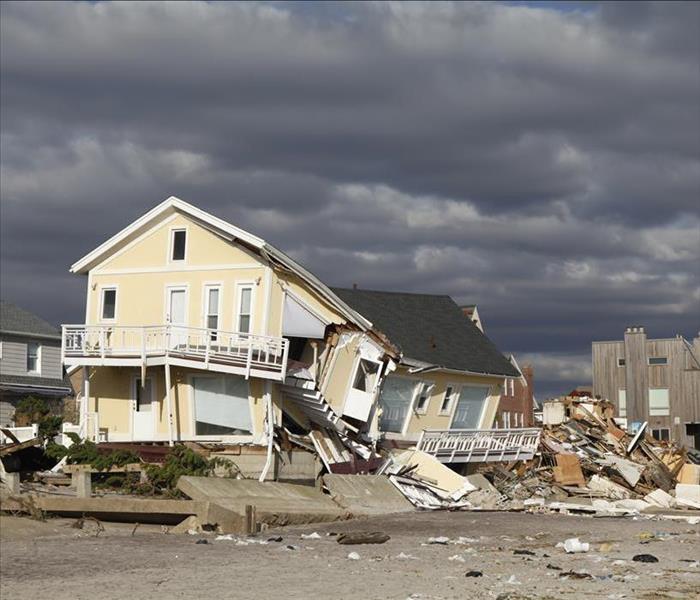 If flood damage or storm damage is evident, it's smart to contact your insurance agent and a storm restoration specialist as soon as possible.
If flood damage or storm damage is evident, it's smart to contact your insurance agent and a storm restoration specialist as soon as possible.
Unpredictability is sometimes the only predictable thing about the weather in Garland, TX. Fortunately, there are steps you can take to prepare your business for severe weather threats such as flooding from powerful storms or hurricanes.
Exterior Preparation
During high winds and torrential downpours, storm damage to the exterior of your commercial property may be unavoidable. Take the following steps to minimize potential damage:
• Clear all drains and gutters from debris to allow for heavy rainfall to flow freely.
• Prune bushes and trees near the building.
• Ensure that lightning rods, if applicable, are maintained.
• Make sure the power generator is fueled or charged and is operational.
• Bring in or secure all loose objects near the building or on the roof.
• Board up glass windows.
• Place sandbags in front of ground floor doorways or secure plastic sheeting with duct tape.
Interior Preparation
Take measures to protect building contents from flood damage. When flooding is anticipated, prepare the inside of the property in the following ways:
• Move all-important inventory and documents away from windows.
• When possible, move furniture and equipment to a higher floor of the building. Remove papers housed in the bottom drawer of ground-level file cabinets.
• Box up loose papers and small objects and remove items from walls.
• Unplug, wrap, and store electronics off of the ground. Before moving, back up computer data.
• When you leave the building, take insurance paperwork and crucial records with you. Lock the doors, close the windows and turn off power, gas, and water.
When a severe weather event approaches in Garland, TX, your first priority is ensuring the safety of your employees and yourself. Then take the above steps to protect the exterior and interior of your commercial property from flooding and high winds.
In the aftermath of the storm, make sure it is safe before returning to the property. If flood damage or storm damage is evident, it's smart to contact your insurance agent and a storm restoration specialist as soon as possible.
Why You Should Avoid Driving on Flooded Streets
1/14/2021 (Permalink)
 Never drive through a flooded roadway. Turn around, don’t drown
Never drive through a flooded roadway. Turn around, don’t drown
Remember These Travel Tips As You Navigate
After a storm or prolonged rainfall in Windsor Park, TX, low-lying areas can be flooded, including roadways. Sometimes it appears that water across a road is not very deep, and you may be tempted to cross it. However, it's not a good idea to drive on a flooded street.
Deep Water Can Look Shallow
A flooded road can be deceiving, especially at night. Water can appear to be shallow enough to drive through, but it's often hard to tell by viewing it from the surface. Underneath, hidden hazards can include:
- Asphalt that is worn away by the storm
- Downed electrical wires
- Other debris or obstacles
Even if your car's bumper clears the surface, water can be sucked into the engine's intake and stall or ruin your engine.
Shallow Water Can Carry a Vehicle
It only takes 12 inches of water on a flooded street to move a small car, and 24 inches of water will carry away most automobiles. Trucks and SUVs with increased ground clearance are also vulnerable on flooded roads.
Once floodwaters pick up a car, the driver loses control, and the vehicle can flip on its side or turn over. The vehicle may hit an obstacle, such as a tree or other vehicles. Water can enter the car within minutes.
Stay Safe in a Flood
The National Weather Service has a motto if you encounter flooded roads: "Turn around; don't drown." Your best line of defense is not to risk driving through water. The extra amount of time it takes to find an alternate route is worth it to save your vehicle and keep you safe.
If your home has flood damage after a storm, call a professional storm damage specialist to take care of repairs. If you need to leave, avoiding a flooded street is always the best idea. It can save you and your passengers from danger and protect your vehicle.
5 Tips for Commercial Roof Maintenance
1/4/2021 (Permalink)
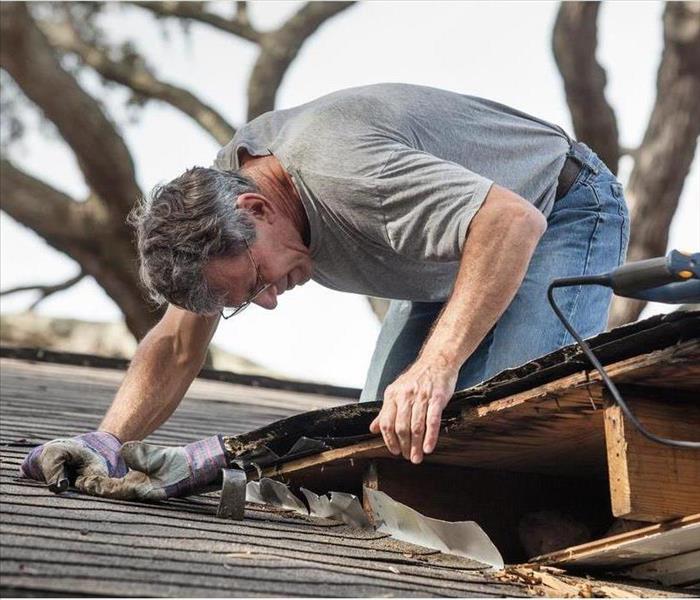 Taking the time to perform necessary maintenance checks can help you avoid having to deal with a roof leak in the future
Taking the time to perform necessary maintenance checks can help you avoid having to deal with a roof leak in the future
Tips To Help Prevent An Unwanted Roof Leak
Business owners have plenty of issues to worry about without having to add a leaky roof into the mix. Proper roof maintenance can help extend your roof's lifespan and save you hundreds of unnecessary repair expenses. Take a look at some of the following tips to help prevent an unwanted roof leak for your building in Duck Creek, TX.
1. Hire a High-Quality Contractor.
Take the time to hire a great contractor and build a strong relationship with them. Damage can occur at any time, so you want to make sure that you have someone on standby that you can count on to help mitigate the issue.
2. Have Your Roof Professionally Inspected Bi-Annually.
In some cases, you might not even realize that you have a roof leak until the damage spirals out of control. Having a licensed contractor inspect your roof at least twice each year can help you catch these small repairs before they evolve into larger expenses.
3. Check for Damage After Severe Storms.
You should take the time to personally inspect your roof if your building has recently weathered a severe storm. Check for rain and wind damage in the form of broken or missing shingles, cracks, or water spots.
4. Clean Your Gutters Regularly.
Your building's gutters are supposed to collect water that runs off of the roof and redirects it away from your building. When they become obstructed, that water can build up and run down the side of your building, resulting in water damage. In extreme cases, it can even begin to pool on the roof itself, weighing down the structure.
5. Avoid Pressure Washing.
Pressure washing seems like a good idea in theory, but it actually has the same effect as a severe storm. The heavy bursts of water can damage and tear away roofing materials. Additionally, it can push debris and water underneath the shingles, resulting in unwanted mold growth.
Taking the time to perform necessary maintenance checks can help you avoid having to deal with an unnecessary roof leak in the future. For more information or assistance, contact storm remediation professionals.
3 Tips for Mitigating Wind Damage
1/4/2021 (Permalink)
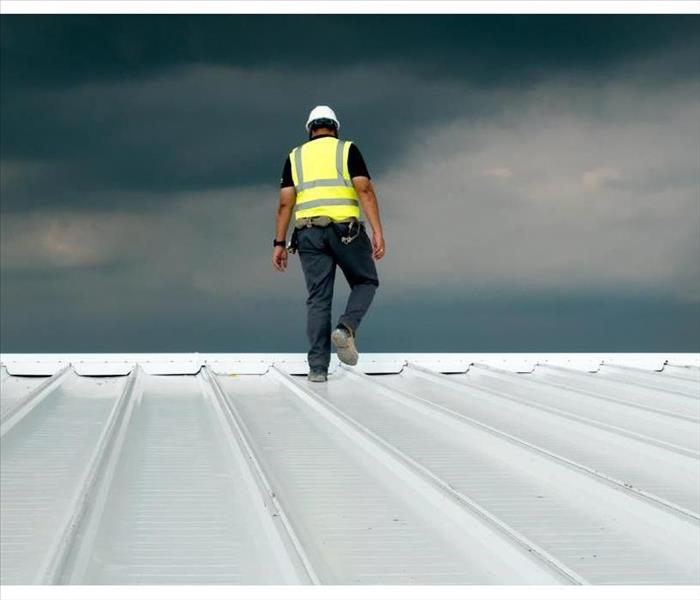 Keep your roof in a good shape
Keep your roof in a good shape
Steps To Take To Mitigate Wind Damage
High winds can damage roofs, leading to a roof leak, break windows, and wreak havoc on any unsecured property. Fortunately, there are steps you can take to mitigate wind damage.
1. Keep Your Roof in Good Shape
A roof with missing shingles or other damage is much more vulnerable to wind damage than a roof that is well maintained. Regularly inspect the roof on all of your buildings and repair any damage you find promptly. Speak with a roofing specialist in Waterford Estates, TX, to find out how often you should replace the type of roof you have on your buildings.
2. Temporarily Repair Roof Damage
If you have been through a major weather event, such as a hurricane or severe storm, the roof repair companies in your area are probably going to be very busy. While you are waiting for permanent repairs to your damaged roof, you should cover any damaged areas with plywood or tarps to reduce the chances of a roof leak that could cause further damage to your property.
3. Clean Up Debris and Dry Out Your Property
Storms that come with high winds usually leave you with broken tree limbs, scattered outdoor furniture, and other debris that could cause further damage to your property. Additionally, broken windows, damaged siding, and leaking roofs can let wind-driven rain into your property, creating the potential for damage from mold and rot. A storm cleanup company can assist you with cleaning up and drying out your property after a wind event.
High winds can cause immediate damage to your property, such as a damaged roof or broken window. The damage caused by high winds can also lead to ongoing problems, such as a roof leak, that require temporary repairs to avoid unnecessary damage from rain. Having a plan in place to mitigate your wind damage can help you reduce the severity of damage caused by wind events.
Be Storm Smart
9/3/2019 (Permalink)
Storm Damage South Garland
Severe weather can happen anytime, anywhere. Each year, Americans cope with an average of these following intense storms.
- 10,000 severe thunderstorms
- 5,000 floods or flash floods
- 1,000 tornadoes
- 2 land falling deadly hurricanes
Approximately 98 percent of all presidentially declared disasters are weather-related, leading to around 500 deaths per year and nearly $15 billion in damage. Knowing your risk of severe weather, taking action and being an example are just a few steps you can take to be better prepared to save your life and assist in saving the lives others.
Know Your Risk. The first step to becoming weather-ready is to understand the type of hazardous weather that can affect where you live and work, and how the weather could impact you, your business and your family. Check the weather forecast regularly, obtain a NOAA Weather Radio, and learn about Wireless Emergency Alerts. Severe weather comes in many forms and your shelter plan should include all types of local hazards.
Take Action. Take the next step in severe weather preparedness by creating a communications plan for your home and business. Put together or purchase an emergency kit. Keep important papers and valuables in a safe place.
Be an Example. Once you have taken action to prepare for severe weather, share your story with co-works and family and friends on Facebook or Twitter. Your preparedness story will inspire others to do the same.
Build an Emergency Supply Kit
- Water (one gallon per person per day)
- Food (non-perishable 3-day supply)
- Manual can opener
- Battery operated radio, preferably a NOAA Weather Radio
- Flashlight and extra batteries
- First aid kit
- Whistle to signal for help
- Clothing
- Dust masks or bandanas
- Plastic sheeting, garbage bags, and duct tape
- Wrench or pliers to turn off utilities
- Hygiene items
- Important documents; copies of insurance policies, identification, and bank account information
- Cash
- Fire extinguisher
- Matches in a waterproof contain
SERVPRO of South Garland (972) 278-7871
Come to SERVPRO for superior storm damage restoration
4/1/2019 (Permalink)
Storms are powerful disturbances in an otherwise normally functioning environment. Most storms are violent enough to cause disruption and damage to human lives and property. Substantial damage to both private and public property renders the dramatic changes in environment that compose a storm undesirable. As they prove to be a hindrance to stable life, such hazards cause a loss of productivity and comfort.
It is very difficult to predict a storm well in advance and prepare for it as they are created due to the dynamic changes in air pressure. However, storm damage is a predictable consequence of any kind of storm, be it hail, thunderstorm, blizzard or firestorm. These natural forces cause damage to roof, structural damage to houses, transform small property into forceful projectiles, and even cause damage to technological implements on the property such as antennas and satellite dishes.
Generally, storm damage restoration is a difficult and a drawn-out process which involves quick assessment of damage, coordination with the insurance companies, deployment of proper tools and resources, and implementation of the disaster recovery plan to prevent any further damage due to the residual debris and water damage left in the wake of the storm.
Such an uphill task is best left to a professional team of trained and dedicated disaster management personnel who not only have the required experience but can also provide a timely intervention. If the affected property happens to be in Las Vegas, the restoration process can be effectively and efficiently taken care of by the SERVPRO of South Garland which have over the years established themselves as the leader in water restoration industry. The quality service that they provide has not only turned them into a trusted name when it comes to storm damage restoration and clean-up, but they are locally owned and operated too, which ensures that they value the community they serve while being an integral part of it.
Storm damage restoration Garland can be relied upon SERVPRO of South Garland who maintains a high standard of services in the area. We are committed to serving the local community with a dedicated 24-hour emergency service, bringing in their assortment of specialized tools and industry-approved techniques that they have developed and incorporated in their disaster management system models. The tested and tried two-pronged method of damage control with simultaneous restoration of property which is employed at all projects undertaken by the SERVPRO of South Garland ensures that the chaos of the storm does not disrupt your daily life any longer than would be necessary.
For more information on how to deal with the process of storm restoration, things to keep in mind when affected by a storm, and how SERVPRO of South Garland can facilitate you should you be on the lookout for a team of a dedicated hazard management professionals, head on to and learn about various ways in which SERVPRO of South Garland can assist you in mitigating the problems left in the wake of a storm.
Garland Flood Damage - Requires Fast, Complete Attention to Detail
3/13/2019 (Permalink)
 Flood damage can happen at just about any time due to many factors, not the least of which are overflowing area basins and the storms that occur.
Flood damage can happen at just about any time due to many factors, not the least of which are overflowing area basins and the storms that occur.
Garland Flood Damage - Requires Fast, Complete Attention to Detail
Water damage to your home is such that, without immediate attention, soaked drywall, carpets and the possible infection of molds make your home an uncomfortable place to live very quickly. This is what makes it necessary to call for the flood damage cleanup that Garland area homeowners appreciate.
What Is Critical To Understand About Flood Damage In Your Garland Area Home?
Flood damage in Garland can happen at just about any time due to many factors, not the least of which are overflowing area basins and the storms that occur all too often. The flooding can come into your home through the basement, due to faulty waterproofing and can get to work on destroying your home's foundation often before you are aware of it.
That is why it is crucial to enlist the services of a flood damage restoration company.
Getting Back To A Healthy Home.
When you contact a flood damage restoration firm, they arrive to begin the process of a complete inspection while setting up large air movers. Thus begins the evacuation of the bad air that wet things throw off. The process of removing the water starts at the same time.
The removal of the water, immediately, assists in preventing as much additional damage as possible because the furniture, wallboard, and carpet become soaked even more and continue to break down as well as the molds that may be present take hold and are transported, by the water, into other areas.
This water removal process may involve submersible pumps as well as powerful commercial wet-vacuums in all areas affected and on all surfaces. Nothing else can be attempted, nor should be until the water has been removed and the air is a bit sweeter. It is necessary to organize and carry out the removal of furniture and other items that must be done to accomplish the drying out of the premises.
Dehumidifiers are then placed to assist in getting all of the moisture out of your home. This moisture, if not removed, continues to help molds and mildew and their dangerous work in your home and everyone who occupies it. It continues to get into all spaces, such as the closets in which your delicate clothing are hanging. It also continues to affect the building materials in a negative way.
The Next Step In The Flood Damage Restoration Is The Cleaning.
Powerful sanitizing agents are used on all surfaces that can be cleaned. This occurs after everything that cannot be wiped completely has been removed. This means a complete detailed cleaning of all rooms, spaces, and areas to ensure nothing, such as mold spores, germs or other allergens remain.
Restoring Your Home after This Flood Damage Cleanup in Garland.
Restoration involves the finishing touches of repairing your carpets or doing some patch and paint work. Water can damage hardwood floors and drywall. Some of the flooring or drywall may need to be removed and replaced.
There are so many things that need to go right, and we have it down to science, so, as a family owned and operated franchise, we at SERVPRO of South Garland stand ready to help your family during this confusing time in your life. When a major flood makes your home uninhabitable, give us a call as we have the personnel, the equipment, and the experience for anything relating to this emergency. That number, at any time, is (972) 278-7871.
Flooding Can Happen In Garland, TX
3/12/2019 (Permalink)
Flooding Can Happen In Garland, TX
According to the National Weather Service (NOAA), "Approximately seventy-five percent of all Presidential disaster declarations are associated with flooding." NOAA lists the most common flood hazards in the United States as:
- Flash Flooding
- River Flooding
- Storm Surge and Coastal Inundation from
- Tropical and Non-Tropical Systems
- Burn Scars/Debris Flows (Caused by Wildfires)
- Ice/Debris Jams
- Snowmelt
- Dry Wash (Caused by heavy rainfall in dry areas)
- Dam Breaks/Levee Failure
Just because you haven't experienced a flood doesn't mean you won't in the future. In fact, 20% of all claims paid by the National Flood Insurance Program (NFIP) were for policies in low-risk communities. On average, flood cost $3.5 billion in annual losses in the U.S., and commercial flood claims average more than $75,000 (NFIP).
When catastrophic water damage happens to you, SERVPRO of South Garland can help. They can help you prepare ahead of time with an Emergency Ready Profile, or respond to any size disaster to begin cleanup and restoration to get you back in business as soon as possible. Call us at 972-278-7871
When Storms or Floods hit Garland, SERVPRO is ready
3/12/2019 (Permalink)
When Storms or Floods hit Garland, SERVPRO is ready
SERVPRO of South Garland specializes in storm and flood damage restoration. Our crews are highly trained and we use specialized equipment to restore your property to its pre-storm condition.
Faster Response
Since we are locally owned and operated, we are able to respond quicker with the right resources, which is extremely important. A fast response lessens the damage, limits further damage, and reduces the restoration cost.
Resources to Handle Floods and Storms
When storms hit Garland, we can scale our resources to handle a large storm or flooding disaster. We can access equipment and personnel from a network of 1,650 Franchises across the country and elite Disaster Recovery Teams that are strategically located throughout the United States.
Have Storm or Flood Damage? Call Us Today (972)278-7871
"Like it never even happened."
SERVPRO of South Garland
Stay Aware of Storms
2/5/2019 (Permalink)
Stay aware of Storms
Living in Texas we can have all four seasons in one day, so it is best to be prepared for any type of weather. Like today we are having very high winds but no tornado in the forecast but even high winds can rip shingles off your roof and allow rain to migrate into your home or business.
And really, how many people take the time to look their roof over for missing shingles. The only time we look is when we notice the tale-tale water stain on the ceiling and by then the damage is done. When the shingles are not replaced that allows more shingles to be raised up and blown off the roof. It can take some time before the stain shows up on the ceiling especially if you have an attic space. If it is not repaired and dried up quickly it can more issues, like flooding of the home, or leaking onto electronic items and frying the big-screen television you worked so hard to purchase; even organic growth can begin to grow.
While some states have major snowfalls in the winter, some have ice storms and that can cause extra weight on your roof. Not to mention the heavy snow and ice and knock out power lines so it is a good idea to have an emergency kit in your home and car to stay warm. It can also freeze water pipes, so it is a good idea to cover your outside faucets with winter covers to keep them from freezing. Burst frozen pipes can cause high dollar repairs to your home or business by flooding the building when they thaw out.
At SERVPRO of South Garland we are here to help when a storm event happens and you need water extracted from your home or business or after a fire and we will make it “Like it never even happened.”
Storm Season in Garland and Surrounding Areas
12/3/2018 (Permalink)
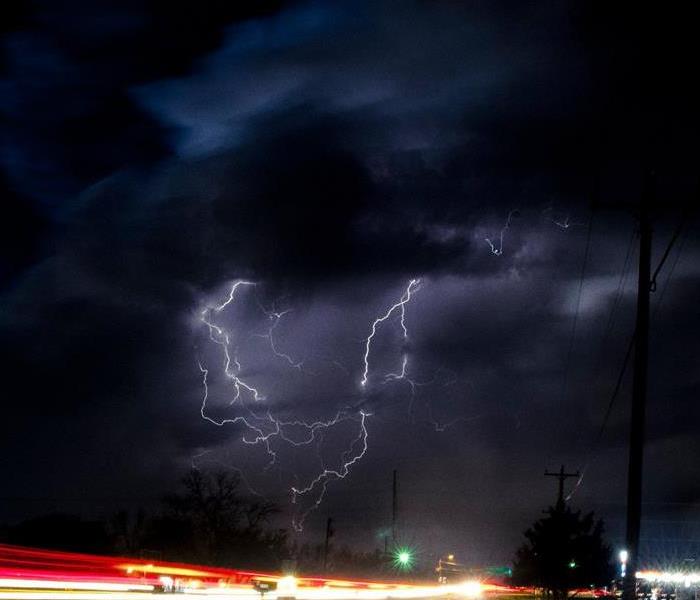 Are you ready?
Are you ready?
Is your home ready to withstand powerful gusts of wind and pounding hail? SERVPRO of South Garland knows that while damage from strong storms is often inevitable, there are steps you can take to minimize harm to your property and protect your personal safety. You shouldn't wait until severe weather is predicted in your area to take action – plan ahead for hailstorms, wind storms and tornadoes by following these steps.
Facts about storms
About 3,000 hailstorms occur annually in the United States, and hail that develops during severe storms can reach softball size. An average of 1,000 tornadoes a year causes $1.1 billion in property damage, 1,500 injuries and 80 deaths. Tornadoes are nature's most violent storms, and while the vast majority of them are weak and short in duration, they can cause significant damage. According to the National Oceanic and Atmospheric Administration (NOAA), about 2 percent of tornadoes fall under the most violent classification, meaning they can reach wind speeds of 205 miles per hour or more.
Plan Ahead
SERVPRO of South Garland recommends that prior to the arrival of a storm; you should take the following steps:
- Build an emergency kit. Your kit should include:
A three-day supply (minimum) of water and non-perishable food for each family member, First-aid supplies, Personal hygiene items, Portable radio, Flashlight, Fresh batteries, Basic tools, Work gloves, Portable lanterns, Signaling device (such as an air horn), Prescription medications, Extra car keys, Extra eyeglasses, Cash, Important contact numbers (such as medical centers, insurance agents, utilities, neighbors and family members), Copies of important documents (such as identification, insurance policies, ownership certificates and banking information) - Create and practice a plan of action for your family. Discuss where and how you will seek shelter during a storm, ensure that everyone is aware of the location of first-aid kits and fire extinguishers, and choose a place for your family to meet if you get separated. Establish a contact person to communicate with concerned relatives, and ensure that you know where and how to shut off utilities at the main switches or valves in the event of a disaster..
- Maintain trees and shrubbery in your yard, removing weak branches and eliminating trees that could fall on your home during a storm. Falling trees and blowing debris in storms often cause fatalities and severe structural damage.
- Replace rock or gravel landscaping material in your with shredded bark, which won't cause damage if it is blown around by strong winds. The Federal Emergency Management Agency (FEMA) offers additional information for protecting your property from strong winds.
- Stay tuned to local radio and TV stations for important weather updates. Tornadoes often accompany thunderstorm warnings, and the sooner you're aware that a storm is on the way, the sooner you can get your family to safety. Invest in a weather alert radio they will give storm alerts before local radio and television stations since they are tied into the National Weather Bureau. They can be purchased at most major retailers.
- Identify the safest area of your home, a place where you can take shelter when the storm hits. In most structures, this will be the basement or a small interior room without windows, such as a bathroom. In a high-rise building, seek out a small interior room or hallway on the lowest floor possible. Close interior doors, and put as many walls between you and the storm as possible.
- Identify escape routes from your home or neighborhood, and note whether you need any additional equipment such as a rope ladder.
- Secure top-heavy furniture that could topple over, such as bookcases, to the walls. Before a storm arrives, move furniture away from doors and windows, if possible.
- Stay away from windows and doors when the storm arrives, and keep all exterior doors and windows closed to prevent rain and falling debris damage in your home's interior.
SERVPRO of South Garland is dedicated to helping our neighbors keep their homes and property safe. If you have storm damage or water intrusion in your home or business give the professionals, who are faster to any disaster, SERVPRO of South Garland a call at (972)278-7871
When Disaster Strikes
9/4/2018 (Permalink)
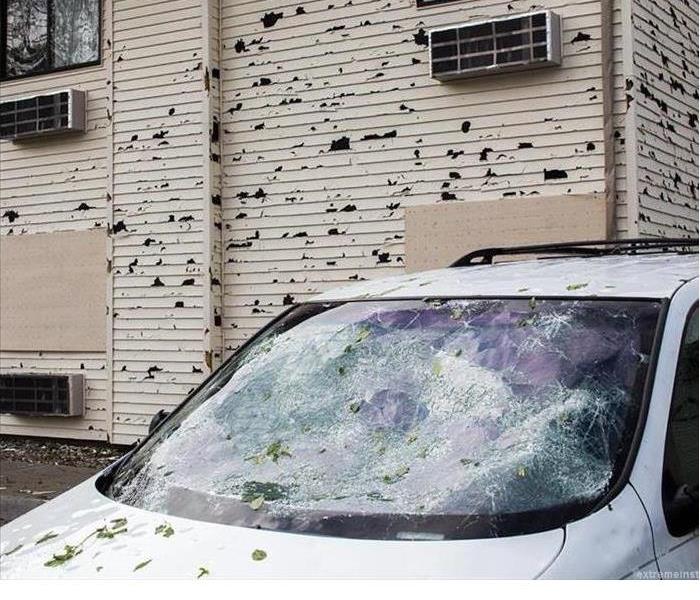 Call us at (972)278-7871 when a storm damages your property
Call us at (972)278-7871 when a storm damages your property
Thunderstorms, Tornadoes, Floods, and fires: these are disasters that the people of North Texas are familiar. But what happen when one of those disasters happens to you or your neighborhood. Thankfully SERVPRO is ready to help get you cleaned back up.
As soon as you call SERVPRO of South Garland we get teams on the way and headed out to assess the situation. Is the property secure, is there water that needs to be removed right away. Is a pack out necessary to store your treasures to keep them safe until your home can be put back together. Our trained as certified restorers work hard to make sure that when disaster strikes we take care of you. Recently there was a hail storm close to our location, and the calls started rolling in and out teams kicked into high gear to get everyone that we could stable and from getting more damage from secondary storms that were on their way. Here at SERVPRO of South Garland we are ready to be the hero that you need, and can trust to get you through any storm disaster. Call us at (972)278-7871 We will be there when you need us.
Severe Weather Dallas Tx
4/3/2018 (Permalink)
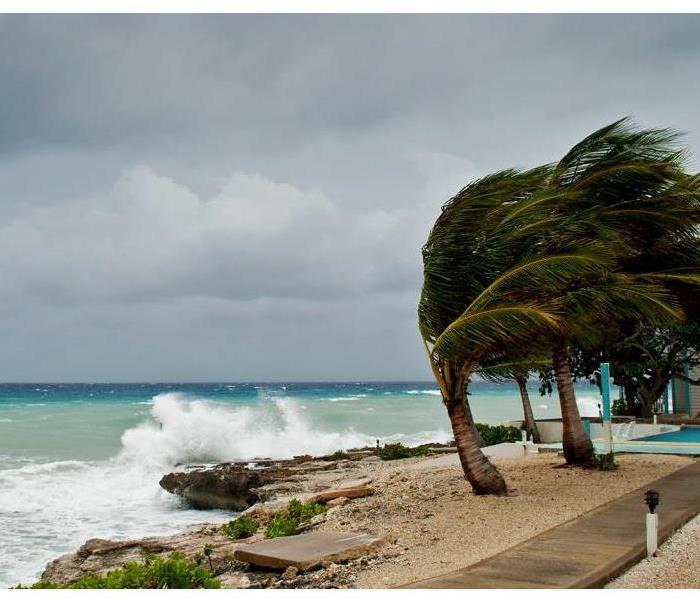 Storms can happen at any time, Be prepared
Storms can happen at any time, Be prepared
Dallas Fort Worth Thunderstorms
All thunderstorms are dangerous. Every thunderstorm produces lightning. While lightning fatalities have decreased over the past 30 years, lightning continues to be one of the top three storm-related killers in the United States. On average in the U.S., lightning kills 51 people and injures hundreds more. Although most lightning victims survive, people struck by lightning often report a variety of long-term, debilitating symptoms.
Here at SERVPRO of South Garland want you to be safe and protect your property during strong storms here in Garland Texas. Other associated dangers of thunderstorms include tornadoes, strong winds, hail and flash flooding. Flash flooding is responsible for more fatalities – more than 140 annually – than any other thunderstorm-associated hazard. Dry thunderstorms that do not produce rain that reaches the ground are most prevalent in the western United States. Falling raindrops evaporate, but lightning can still reach the ground and can start wildfires.
To prepare for a thunderstorm, you should do the following:
- To begin preparing, you should build an emergency kitand make a family communications plan.
- Remove dead or rotting trees and branches that could fall and cause injury or damage during a severe thunderstorm.
- Postpone outdoor activities.
- Secure outdoor objects that could blow away or cause damage.
- Get inside a home, building, or hard top automobile (not a convertible). Although you may be injured if lightning strikes your car, you are much safer inside a vehicle than outside.
- Remember, rubber-soled shoes and rubber tires provide NO protection from lightning. However, the steel frame of a hard-topped vehicle provides increased protection if you are not touching metal.
- Shutter windows and secure outside doors. If shutters are not available, close window blinds, shades or curtains.
- Unplug any electronic equipment well before the storm arrives.
Facts about Thunderstorms
- They may occur singly, in clusters or in lines.
- Some of the most severe occur when a single thunderstorm affects one location for an extended time.
- Thunderstorms typically produce heavy rain for a brief period, anywhere from 30 minutes to an hour.
- Warm, humid conditions are highly favorable for thunderstorm development.
- About 10 percent of thunderstorms are classified as severe – one that produces hail at least an inch or larger in diameter, has winds of 58 miles per hour or higher or produces a tornado.
Know the Terms
Familiarize yourself with these terms to help identify a thunderstorm hazard:
Severe Thunderstorm Watch - Tells you when and where severe thunderstorms are likely to occur. Watch the sky and stay tuned to NOAA Weather Radio, commercial radio or television for information.
Severe Thunderstorm Warning - Issued when severe weather has been reported by spotters or indicated by radar. Warnings indicate imminent danger to life and property to those in the path of the storm.
Be Prepared for Storms
12/5/2017 (Permalink)
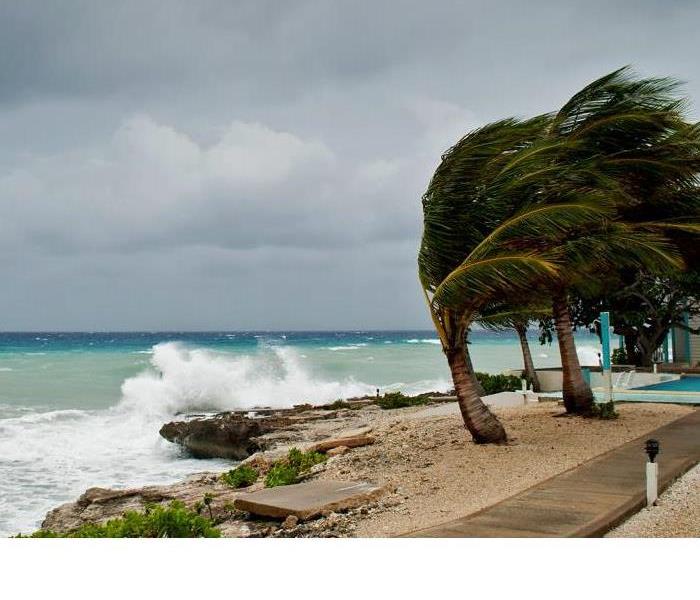 Storm will come Be Prepared and then Call SERVPRO of South Garland
Storm will come Be Prepared and then Call SERVPRO of South Garland
Rain, Hail, Tornadoes and Floods
These events are common here in our North Texas Lives, and they are something that every homeowner has or will have to deal with. So how can you protect yourself during a storm?
General home maintenance
- Check your roof regularly to make sure it’s in good condition
- Keep gutters, downpipes and drains clear
- Remove tree branches that are close to your house
- Fix any corrosion, loose fittings and rotting or termite-affected timber
- Secure loose items around your property
General home safety preparations
- Ensure your home, contents and car insurance is adequate and current
- Identify the safest room in which to shelter during a storm
- Learn how to safely turn off your power, water and gas
- Keep water containers, a camping stove and fuel safely on-hand
If you live in a flood-prone area
- Store poisons and garden chemicals well above ground level
- Identify indoor items you’ll need to raise or empty if flood threatens
- Relocate power points well above previous flood levels
If you live in a storm or cyclone-prone area
- Get a professional builder to assess the structural integrity of your house
- Fit shutters or metal screens to your windows for added protection
IMPORTANT SAFETY TIP:
Do not use portable generators in enclosed spaces. They produce carbon monoxide – a colorless and odorless gas that can be harmful to humans
After the storm passes if there was damage from the storm or water inside your home call SERVPRO of South Garland at (972)278-7871
Dangers Associated with Flood Water
10/26/2017 (Permalink)
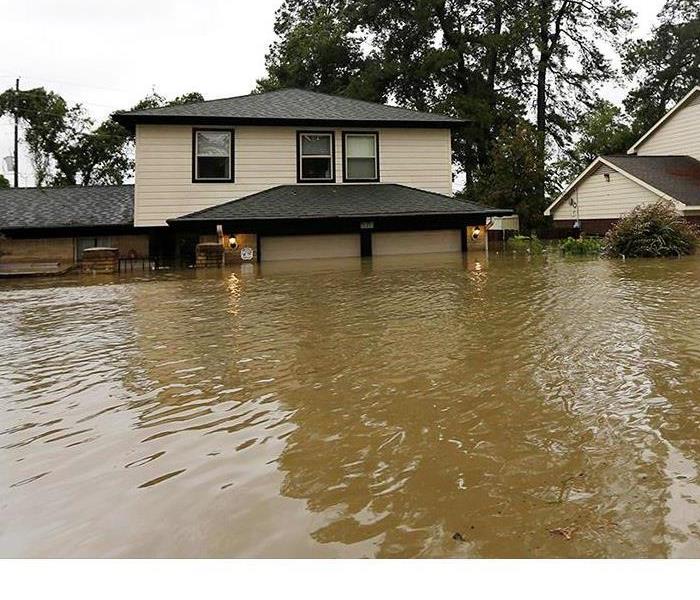 Avoid Flood waters, Stay Safe.,
SERVPRO of South Garland (972) 278-7871
Avoid Flood waters, Stay Safe.,
SERVPRO of South Garland (972) 278-7871
Dangers Associated with Flood Water
Health Risks
Flood waters and standing waters pose various health risks,
Practice good hygiene (handwashing) after contact with flood waters.
- Do not allow children to play in flood water areas.
- Wash children’s hands frequently (always before meals).
- Do not allow children to play with toys that have been contaminated by flood water and have not been disinfected.
Wound Infections
Open wounds and rashes exposed to flood waters can become infected. To protect yourself and your family,
- Avoid exposure to flood waters if you have an open wound.
- Cover clean, open wounds with a waterproof bandage to reduce chance of infection.
- Keep open wounds as clean as possible by washing well with soap and clean water.
- If a wound develops redness, swelling, or drainage, seek immediate medical attention.
Chemical Hazards
Be aware of potential chemical hazards during floods. Flood waters may have moved hazardous chemical containers of solvents or other industrial chemicals from their normal storage places.
Injuries
Drowning
Flood water poses drowning risks for everyone, regardless of their ability to swim. Swiftly moving shallow water can be deadly, and even shallow standing water can be dangerous for small children.
Vehicles do not provide adequate protection from flood waters. They can be swept away or may stall in moving water.
Animal and Insect Bites
Flood waters can displace animals, insects, and reptiles. To protect yourself and your family, be alert and avoid contact.
Electrical Hazards
Avoid downed power lines.
Wounds
Flood waters may contain sharp objects, such as glass or metal fragments, that can cause injury and lead to infection.
SERVPRO of South Garland wants to remind you that avoiding flood water is the best way to keep yourself safe in a flood, but if you cannot avoid going into the water remember to get clean wash your hands as soon as possible, shower, and dispose of the clothes you were wearing as there is no way to get all of the bacteria off of them.
If you have been a victim of a flood and need your home dried out call SERVPRO of South Garland today at (972) 278-7871 we will make it “Like it never even happened.”
Hurricane Harvey and the People of Houston
10/12/2017 (Permalink)
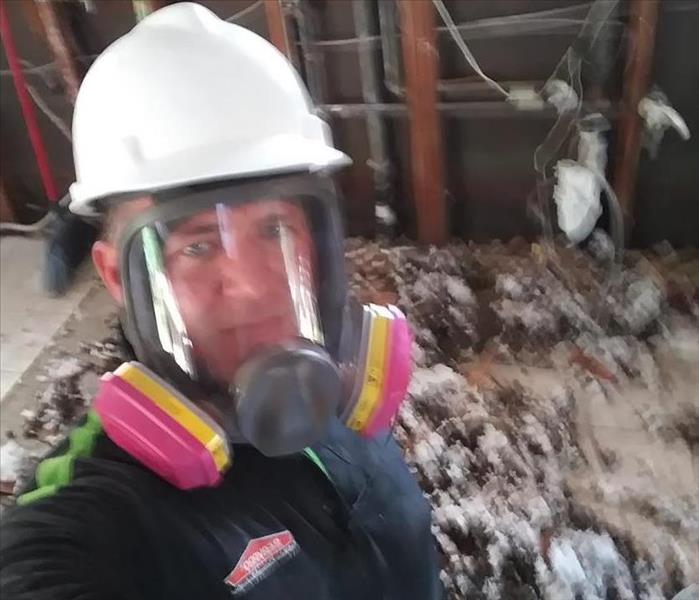 SERVPRO of South Garlands Trip to Houston for Storm Harvey 2017
SERVPRO of South Garlands Trip to Houston for Storm Harvey 2017
When SERVPRO of South Garland arrived in Houston in the aftermath of Hurricane Harvey the word Devastation was in all the headlines and one cannot grasp the severity and gravity of what that word translates to in this case unless you are a Houstonian.
We saw what looked like a post-apocalyptic fallout with huge piles of soaked debris and refuse that lined the neighborhoods outside of homes piling so high that huge stacks were forming up and falling over into new stacks of debris containing ruined carpets, furniture, clothes, electronics, clothes, family heirlooms, original fine art, photographs, trophies, toys and arts and crafts that were made by tiny growing hands that are irreplaceable mementos of their pride and joy. Canals were being formed between the ever growing heavy stacks as a path in and out of the hollow houses. We added to those stacks with garbage bags full of soaked drywall, tile, wood and fiberglass.
The people in Houston and we will never forget the smell that got worse with every day. Their once well-kept treasures were now rotting, filthy, repugnant trash that no value could be brought back to it. A total loss, the years of hard work and effort that it took to attain all of these items were reduced to $0.00 overnight and replaced with a fowl stench.
Everything's tactile surface had been transformed radically by either a slimy film covered on it, or it crumbled in your hands if you tried to grab it, or splinters spiked out of it, or a rusted patina had stained it or green fuzz had grown on top of it.
When I stepped out into the middle of the street, which was occupied by rescue boats a few days prior, I closed my eyes and could hear the sound of demolition crews. The beep beep of huge trucks backing up. The smash, boom, pow of sledgehammers crashing into the ruined drywall. It was a noisy sound of destruction. If we can personify the Hurricane we can most definitely identify with the physical pain associated with the sound involved in ripping and tearing out the guts of these people’s homes. We were most empathetic to the people we came into contact with and expressed that we do not mean any disrespect when clearing out the homes but time plays an important role in the removal and restoration process.
When asked about Houstonians and the Devastation that Hurricane Harvey caused, all of us at SERVPRO of South Garland let people know that the people we came into contact with in Houston are an absolute inspiration. They greeted us with smiles and came together as a community to help one another. Volunteers whose homes were destroyed were traveling up and down streets giving food, water and ice cream to not only the people who lived there but the workers that came from all over the state and country to do this demolition. I saw neighbors gathering together, telling stories, smiling and hugging each other, children playing and laughing together, and there was a gentle spirit in the atmosphere more powerful than any disaster could over power and the greatest strength we have as humans was proven to anyone who witnessed over and over again. The power of Love out shined the devastation that Hurricane Harvey caused, because the great spirit of community that the people of Houston have is building and stronger than ever.
A Description of Flood Damages and Cleanup Standards
10/11/2017 (Permalink)
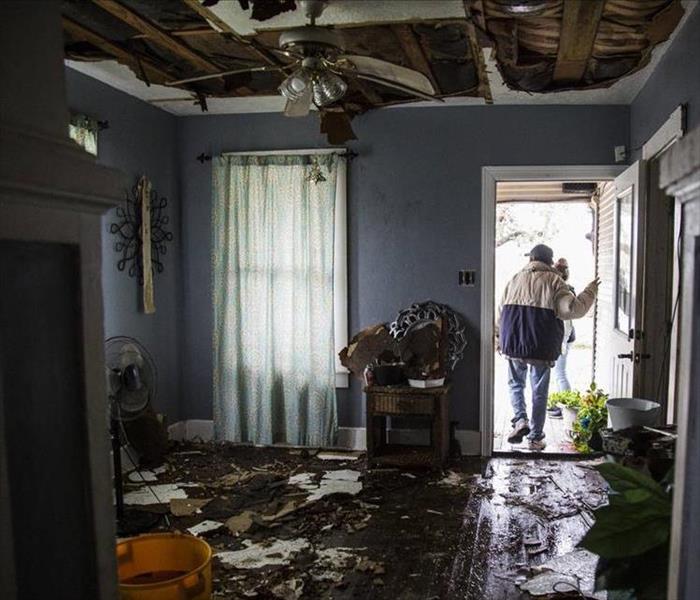 Is your Home flooded Call SERVPRO of South Garland today (972)278-7871
Is your Home flooded Call SERVPRO of South Garland today (972)278-7871
A Description of Flood Damages and Cleanup Standards:
Here in the Dallas/ Fort worth Areas residents are familiar with hearing about floods, and we hope that it never happens to us, but when your house floods, the water can wreak havoc on the structure of the house, your personal belongings, and the health of the inside environment. Flood waters contain many contaminants and lots of mud. High dollar items can get ruined all at once, even with just an inch of water, for example: carpeting, wallboard, appliances, and furniture. A more severe storm or deeper flood may add damage to even more expensive systems, like: ducts, the heater and air conditioner, roofing, private sewage and well systems, utilities, and the foundation.
After a flood, cleaning up is a long and hard process, and hiring a company that specializes in water mitigation and clean up like SERVPRO of South Garland can be cost effective for you in the long run. Here is a list of common techniques for sanitizing and cleaning flooded items:
- First things first: call your insurance agent. If your insurance covers the damage, your agent will tell you when an adjuster will contact you. List damage and take photos or videotape as you clean. You'll need complete records for insurance claims, applications for disaster assistance and income tax deductions. Hiring a recognized mitigation company Like SERVPRO of South Garland can help you keep track of necessary documentation.
- Contaminated mud-
Shovel out as much mud as possible, then use a garden sprayer or hose to wash away mud from hard surfaces. - Clean and disinfect every surface. Scrub surfaces with hot water and a heavy-duty cleaner. Then disinfect with a solution of 1/4 cup chlorine bleach per gallon of water or a product that is labeled as a disinfectant to kill germs. If you have started cleaning and them brought in a professional company like SERVPRO of South Garland let the professionals know what sanitizers you have used as certain products do not mix together and if they do could cause problems.
- In the kitchen-
- Immerse glass, porcelain, china, plastic dinnerware and enamelware for 10 minutes in a disinfecting solution of 2 tablespoons of chlorine bleach per gallon of hot water. Air-dry dishes. Do not use a towel.
- Disinfect silverware, metal utensils, and pots and pans by boiling in water for 10 minutes. Chlorine bleach should not be used in this case because it reacts with many metals and causes them to darken.
- Cupboards and counters need to be cleaned and rinsed with a chlorine bleach solution before storing dishes.
- Lower cabinetry will probably need to be removed in order to get to the drywall and wet insulation behind them. Granite countertops can be salvaged; however they tend to break easily when removed and a company that specializes in counter top removal may be needed to guaranty that they can be reused.
- Furniture and household items-
- Take furniture, rugs, bedding and clothing outside to dry as soon as possible. Use an air conditioner or dehumidifier to remove moisture or open at least two windows to ventilate with outdoor air. Use fans to circulate air in the house. If mold has already developed, brush off items outdoors to prevent scattering spores in the house. Vacuum floors, ceilings and walls to remove mold, then wash with disinfectant. Wear a two-strap protective mask to prevent breathing mold spores.
- Mattresses should be thrown away.
- Upholstered furniture soaks up contaminants from floodwaters and should be cleaned only by a professional.
- Wood veneered furniture is usually not worth the cost and effort of repair.
Solid wood furniture can usually be restored, unless damage is severe. - Toys and stuffed animals may have to be thrown away if they've been contaminated by floodwaters.
- Photographs, books and important papers can be frozen and cleaned later. They should be dried carefully and slowly. Wash the mud off and store the articles in plastic bags and put them in a frost-free freezer to protect from mildew and further damage until you have time to thaw and clean them or take them to a professional. This must happen as quickly as possible, paper start to degrade very fast after water damage.
- Ceilings and walls-
- Wallboard acts like a sponge when wet. Remove wallboard, plaster and paneling to at least the flood level. If soaked by contaminated floodwater, it can be a permanent health hazard and should be removed. If most of the wallboard was soaked by clean rainwater, consider cutting a 4- to 12-inch-high section from the bottom and top of walls. This creates a "chimney effect" of air movement for faster drying. A reciprocating saw with a metal cutting blade works well, but use only the tip of the blade and watch out for pipes, ductwork and wiring.
- Plaster and paneling can often be saved, but air must be circulated in the wall cavities to dry the studs and sills.
- The three kinds of insulation must be treated differently. Styrofoam might only need to be hosed off. Fiberglass batts should be thrown . Loose or blown-in cellulose should be replaced since it holds water for a long time and can lose its antifungal and fire retardant abilities.
- Electrical system-
The system must be shut off and repaired and inspected by an electrician before it can be turned back on. Wiring must be completely dried out- even behind walls. Switches, convenience outlets, light outlets, entrance panel, and junction boxes that have been under water may be filled with mud. - Heating and cooling systems and ducts-
Will need inspection and cleaning. Flood-soaked insulation should be replaced. - Appliances-
Appliances will get stains, odors, silt deposits, and gritty deposits and need to be serviced, cleaned and sanitized. Running equipment before it is properly cleaned could seriously damage it and/or shock you. Professional cleaning is recommended for electronics, TVs and radios, washing machines, dryers, dishwashers, and vacuum cleaners. The hard exterior can be hand cleaned. All metallic appliances that have been flooded should be properly grounded to prevent electric shock. Mud or dirt in a grounded outlet or adapter may prevent the grounding system from working, and you could be electrocuted. Unless these are very high grade appliances it is usually more cost effective and reduces risk of damage down the road to replace them. - Pump out the basement-
If your basement is full or nearly full of water, pump out just 2 or 3 feet of water each day. If you drain the basement too quickly, the pressure outside the walls will be greater than the pressure inside the walls. That may make the walls and floor crack and collapse. - Floors-
With wood subflooring, the floor covering (vinyl, linoleum, and carpet) must be removed so the subflooring can dry thoroughly which may take several months. Open windows and doors to expose the boards to as much air as possible.- Carpeting-
Clean and dry carpets and rugs as quickly as possible. If sewage-contaminated floodwater covered your carpeting, discard it for health safety reasons. Also discard if the carpet was under water for 24 hours or more. To clean, drape carpets and rugs outdoors and hose them down. Work a disinfecting carpet cleaner into soiled spots with a broom. To discourage mildew and odors, rinse with a solution of 2 tablespoons bleach to 1 gallon water, but don't use this solution on wool or nylon carpets. Dry the carpet and floor thoroughly before replacing the carpet. Padding is nearly impossible to clean so should be replaced. If the carpet can't be removed, dry it as quickly as possible using a wet/dry vacuum and dehumidifier. Use a fan to circulate air above the carpet, and if possible, lift the carpet and ventilate with fans underneath. - Vinylflooring and floor tile may need to be removed to allow drying of subfloor.
- Wood floors-
Wooden floors should be dried gradually. Sudden drying could cause cracking or splitting. Some restoration companies can accelerate drying time by forcing air through the fluted underside of hardwood floorboards. Remove hardwood floor boards to prevent buckling. Remove a board every few feet to reduce buckling caused by swelling. Clean and dry wood before attempting repairs.
- Private sewage systems-
Flooding of a private sewage system can be a hazardous situation for homeowners. It may lead to a back-up of sewage in the home, contaminated drinking water and lack of sanitation until the system is fixed. When flooding or saturated soil conditions persist, a private sewage system cannot function properly. Soil treatment systems for wastewater rely on aerobic (with oxygen) regions to reduce the amounts of chemicals and living organisms (viruses, bacteria and protozoa). When the soil is saturated or flooded, those hazardous materials can enter the groundwater and your drinking water supply.
If your home or business has been flooded call the professionals at SERVPRO of South Garland today at (972)278-7871 and we will get your home back as soon as possible.
Storm Season is Here
3/27/2017 (Permalink)
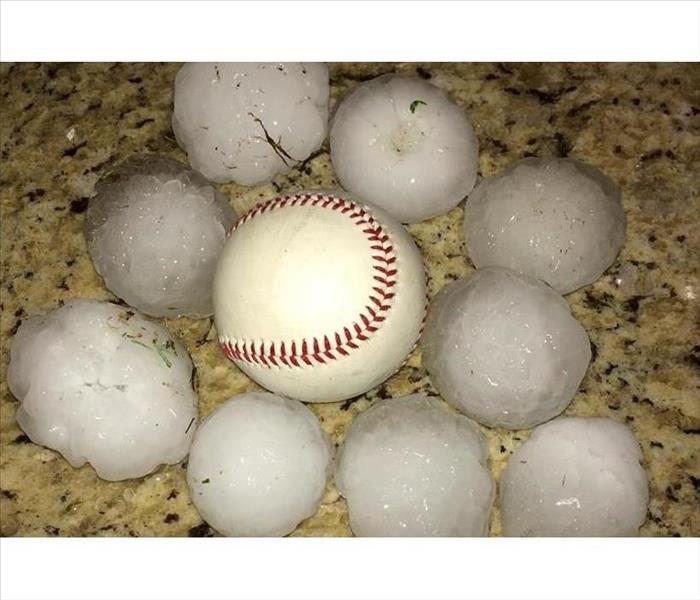 When Hail Smashes Call SERVPRO of South Garland we restore your Home and Property (972)278-7871
When Hail Smashes Call SERVPRO of South Garland we restore your Home and Property (972)278-7871
Storm Season is Here
Many North Texans were watching the severe storms on Sunday March 26, and many may have been worried that their homes and businesses could be damaged. Here at, SERVPRO of South Garland, we want you to have peace of mind during this storm season knowing that you are prepared, and that if the worst does happen you know who to call. With that in mind let’s take a look at a few tips that can keep you and your property safe during severe storms.
Tips to protect your property from storm damage.
- Build an emergency kit. Your kit should include:
A three-day supply (minimum) of water and non-perishable food for each family member, First-aid supplies, Personal hygiene items, Portable radio, Flashlight, Fresh batteries, Basic tools, Work gloves, Portable lanterns, Signaling device (such as an air horn), Prescription medications, Extra car keys, Extra eyeglasses, Cash, Important contact numbers (such as medical centers, insurance agents, utilities, neighbors and family members), Copies of important documents (such as identification, insurance policies, ownership certificates and banking information) - Create and practice a plan of action for your family. Discuss where and how you will seek shelter during a storm, ensure that everyone is aware of the location of first-aid kits and fire extinguishers, and choose a place for your family to meet if you get separated. Establish a contact person to communicate with concerned relatives, and ensure that you know where and how to shut off utilities at the main switches or valves in the event of a disaster.
- Consider installing shingles rated by UL 2218 or FM 4473 as Class 3 or 4 to protect your roof from hail damage. These shingles have been proven to withstand harsher hail damage.
- Maintain trees and shrubbery in your yard, removing weak branches and eliminating trees that could fall on your home during a storm. Falling trees and blowing debris in storms often cause fatalities and severe structural damage.
- Replace rock or gravel landscaping material in your yard with shredded bark, which won't cause damage if it is blown around by strong winds.
- Stay tuned to local radio and TV stations for important weather updates. Tornadoes often accompany thunderstorm warnings, and the sooner you're aware that a storm is on the way, the sooner you can get your family to safety.
- Identify the safest area of your home, a place where you can take shelter when the storm hits. In most structures, this will be the basement or a small interior room without windows, such as a bathroom. In a high-rise building, seek out a small interior room or hallway on the lowest floor possible. Close interior doors, and put as many walls between you and the storm as possible.
- Identify escape routes from your home or neighborhood, and note whether you need any additional equipment such as a rope ladder.
- Secure top-heavy furniture that could topple over, such as bookcases, to the walls. Before a storm arrives, move furniture away from doors and windows, if possible.
- Stay away from windows and doors when the storm arrives, and keep all exterior doors and windows closed to prevent rain and falling debris damage in your home's interior.
When all else fails remember SERVPRO of South Garland can restore you home and belongings. Give the restoration Professionals a call today (972)278-7871.
Garland Tornado Year Anniversary
12/13/2016 (Permalink)
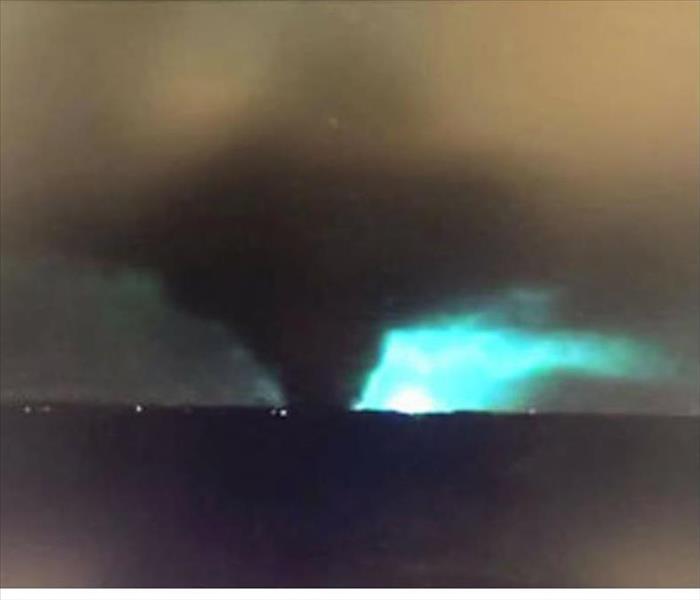 Come and remember Candle Light Vigil at 1044 E Interstate 30, Garland, TX 75043-4202
Come and remember Candle Light Vigil at 1044 E Interstate 30, Garland, TX 75043-4202
Garland Tornado Year Anniversary
December 26, 2015 is a day that was etched into many people’s memories. That night a devastating F4 tornado hit Garland, Rowlett, and Wylie Texas. It destroyed homes, businesses, and 9 people lost their lives as the tornado passed over interstate 30 and President George Bush Turnpike during a busy travel time. The cities of Garland and Rowlett were drained of their resources in hours, and first responders talk about the amount of devastation. Emergency vehicles could not move through the debris left in the wake. In the days following cleanup crews were sent to take care of the debris on the roads and in the public areas, SERVPRO storm teams from all over the region came to help out. SERVPRO of South Garland banded with the community to help get everyone’s belongings safe and their homes dried out and safe to rebuild. Now almost a year later families are still rebuilding and the damage and devastation that they have experienced will remind them of how their community came together after the storm damage and were #GarlandStrong, #RowlettStrong, and stayed #TexasStrong. Our community has had fun runs, and charity drives, and benefits designed to get money where it was needed. Now we want to remember and have a time of coming together on December 26, 2016 we want to honor those who died, the people that stepped up and organized recourses after the disaster, to recognize those who put so much effort into restoring our community, and the families that have rebuilt. There is going to be a Candle Light Vigil at 1044 E Interstate 30, Garland, TX 75043-4202 we are going to be there and invite you all to come and remember those who were affected by this devastating disaster.
Severe Storms in Garland Texas
12/2/2016 (Permalink)
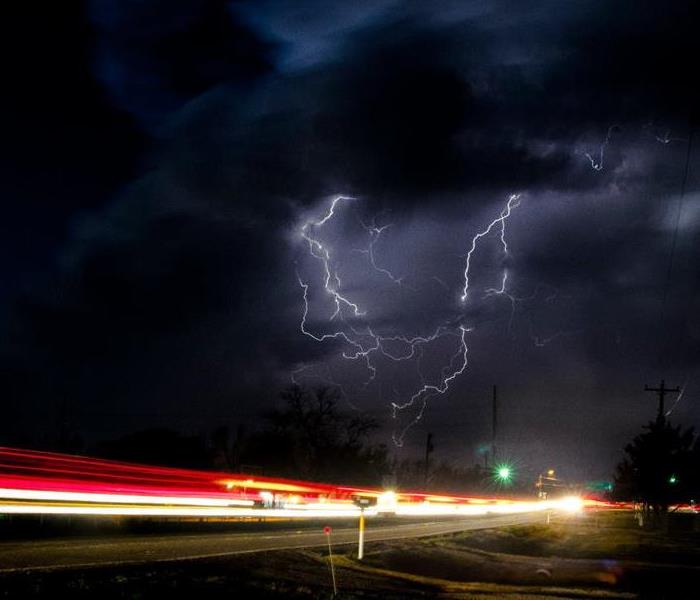 After the Storm your House is Flooded, Call SERVPRO of South Garland (972)278-7871
After the Storm your House is Flooded, Call SERVPRO of South Garland (972)278-7871
Severe Storms in Garland Texas
All thunderstorms are dangerous. Every thunderstorm produces lightning. While lightning fatalities have decreased over the past 30 years, lightning continues to be one of the top three storm-related killers in the United States. On average in the U.S., lightning kills 51 people and injures hundreds more. Although most lightning victims survive, people struck by lightning often report a variety of long-term, debilitating symptoms.
Here at SERVPRO of South Garland want you to be safe and protect your property during strong storms here in Garland Texas. Other associated dangers of thunderstorms include tornadoes, strong winds, hail and flash flooding. Flash flooding is responsible for more fatalities – more than 140 annually – than any other thunderstorm-associated hazard. Dry thunderstorms that do not produce rain that reaches the ground are most prevalent in the western United States. Falling raindrops evaporate, but lightning can still reach the ground and can start wildfires.
To prepare for a thunderstorm, you should do the following:
- To begin preparing, you should build an emergency kit and make a family communications plan.
- Remove dead or rotting trees and branches that could fall and cause injury or damage during a severe thunderstorm.
- Postpone outdoor activities.
- Secure outdoor objects that could blow away or cause damage.
- Get inside a home, building, or hard top automobile (not a convertible). Although you may be injured if lightning strikes your car, you are much safer inside a vehicle than outside.
- Remember, rubber-soled shoes and rubber tires provide NO protection from lightning. However, the steel frame of a hard-topped vehicle provides increased protection if you are not touching metal.
- Shutter windows and secure outside doors. If shutters are not available, close window blinds, shades or curtains.
- Unplug any electronic equipment well before the storm arrives.
Facts about Thunderstorms
- They may occur singly, in clusters or in lines.
- Some of the most severe occur when a single thunderstorm affects one location for an extended time.
- Thunderstorms typically produce heavy rain for a brief period, anywhere from 30 minutes to an hour.
- Warm, humid conditions are highly favorable for thunderstorm development.
- About 10 percent of thunderstorms are classified as severe – one that produces hail at least an inch or larger in diameter, has winds of 58 miles per hour or higher or produces a tornado.
Know the Terms
Familiarize yourself with these terms to help identify a thunderstorm hazard:
Severe Thunderstorm Watch - Tells you when and where severe thunderstorms are likely to occur. Watch the sky and stay tuned to NOAA Weather Radio, commercial radio or television for information.
Severe Thunderstorm Warning - Issued when severe weather has been reported by spotters or indicated by radar. Warnings indicate imminent danger to life and property to those in the path of the storm.
After the storm you may find water has made its way into your home. If there is a significant amount calling the professionals at SERVPRO of South Garland is the best option for you because it needs to be dried out completely to keep mold from growing in your home. If you have found water in your home call us today (972)278-7871.
7 Tips for Staying Safe During a Tornado
11/28/2016 (Permalink)
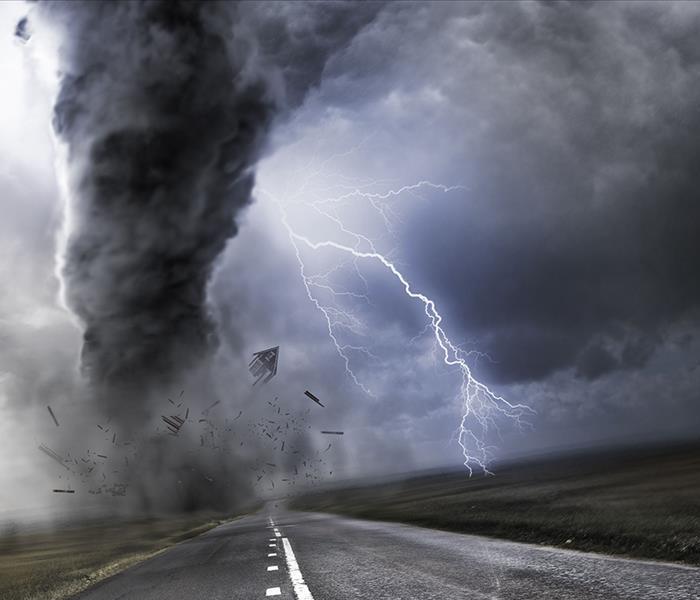 Storms are powerful forces of nature, if you find your property damaged call the professionals at SERVPRO of South Garland (972)278-7871.
Storms are powerful forces of nature, if you find your property damaged call the professionals at SERVPRO of South Garland (972)278-7871.
7 Tips for Staying Safe During a Tornado
SERVPRO of South Garland wants to make sure that our neighbors stay safe as storm season in Texas is around the corner. Last year just after Christmas a series of tornadoes hit the towns of Wylie, Rowlett, and Garland Texas, causing major destruction and devastation. We hope that you do not have to suffer through a disaster like this, but want you be prepared if the worst happens to you. Remember SERVPRO of South Garland will always be ready because we are faster to any disaster no matter the size. So with that in mind here are 7 tips on how to stay safe during severe weather.
- Figure out a safe place to ride out the storm
Do you live in a mobile home? Get out. Driving in a car? Get home as quickly as you can, and if that's not possible, get to a sturdy building.
- Get away from windows and get underground
Regardless of where you're hunkering down, it should be as far away from windows as possible. Even if a tornado doesn't hit, wind or hail could shatter windows, and if you're nearby, you could get hurt.
You should make every attempt to get underground during a severe storm, either in a basement or storm shelter. If neither is possible, head to the innermost room or hallway on the lowest floor of your home. The goal is to put as many walls between yourself and the outside world. In many of those homes, the outer walls have been destroyed, but a few inner rooms are somewhat intact.
- If a tornado appears while you're on the road ...
You should make every effort to find a safe building for shelter. If you can't find one, NEVER hide under an overpass. Instead, find a ditch, get down and cover your head. Get as far from your vehicle as you can to prevent it from being blown onto you.
- Put on your shoes – and a helmet
If you're at home and severe weather is bearing down, prepare for the worst. If your house is damaged by a tornado, you could end up walking through debris that's riddled with nails, glass shards and splintered wood. The best way to ensure your shoes aren't scattered is to put on a pair before the storm comes.
If you own a bike helmet, be sure to put it on during a severe storm. It could save you from life-threatening head trauma if your home suffers a direct hit.
- Keep your pets on a leash or in a carrier, and bring them with you
They're a part of the family, so make sure they go to a safe place with you. Make sure their collar is on for identification purposes, and keep them leashed if they're not in a crate. If your home is damaged by a tornado, it might not be familiar to them anymore, and they might get loose. Be sure to get them to a safe place or put them in a crate while performing clean-up.
- Don't leave your home and try to drive away from a tornado
If you made it home, stay there. Tornadoes can shift their path, and even if you think you're directly in the line of the storm, being inside shelter is safer than being inside a car. Traffic jams could keep you from getting out of the storm's path, or a small wobble could send the storm in a different direction.
- Know your severe weather terms
- Severe thunderstorm watch: Conditions are conducive to the development of severe thunderstorms in and around the watch area. These storms produce hail of ¾ inch in diameter and/or wind gusts of at least 58 mph.
- Severe thunderstorm warning: Issued when a severe thunderstorm has been observed by spotters or indicated on radar, and is occurring or imminent in the warning area. These warnings usually last for a period of 30 to 60 minutes.
- Tornado watch: Conditions are favorable for the development of severe thunderstorms and multiple tornadoes in and around the watch area. People in the affected areas are encouraged to be vigilant in preparation for severe weather.
- Tornado warning: Spotters have sighted a tornado or one has been indicated on radar, and is occurring or imminent in the warning area. When a tornado warning has been issued, people in the affected area are strongly encouraged to take cover immediately.
SERVPRO of South Garland would like for all of our neighbors to stay safe. But to remember us if you property is effected by storms. If you need help getting water out of your property don’t wait call the professionals at (972)278-7871.
9 Tips for Preparing Your Home for Severe Weather
11/22/2016 (Permalink)
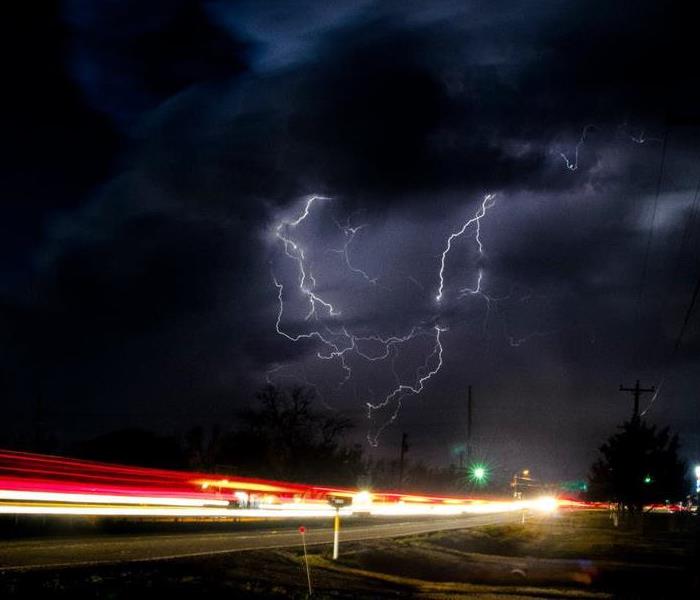 When storms damage your property give the professionals at SERVPRO of South Garland a call at (972)278-7871
When storms damage your property give the professionals at SERVPRO of South Garland a call at (972)278-7871
9 Tips for Preparing Your Home for Severe Weather
Is your home ready to withstand powerful gusts of wind and pounding hail? SERVPRO of South Garland knows that while damage from strong storms is often inevitable, there are steps you can take to minimize harm to your property and protect your personal safety. You shouldn't wait until severe weather is predicted in your area to take action – plan ahead for hailstorms, wind storms and tornadoes by following these steps.
Facts about storms
About 3,000 hailstorms occur annually in the United States, and hail that develops during severe storms can reach softball size. An average of 1,000 tornadoes a year causes $1.1 billion in property damage, 1,500 injuries and 80 deaths. Tornadoes are nature's most violent storms, and while the vast majority of them are weak and short in duration, they can cause significant damage. According to the National Oceanic and Atmospheric Administration (NOAA), about 2 percent of tornadoes fall under the most violent classification, meaning they can reach wind speeds of 205 miles per hour or more.
Planning ahead
SERVPRO of South Garland recommends that prior to the arrival of a storm, you should take the following steps:
- Build an emergency kit. Your kit should include:
A three-day supply (minimum) of water and non-perishable food for each family member, First-aid supplies, Personal hygiene items, Portable radio, Flashlight, Fresh batteries, Basic tools, Work gloves, Portable lanterns, Signaling device (such as an air horn), Prescription medications, Extra car keys, Extra eyeglasses, Cash, Important contact numbers (such as medical centers, insurance agents, utilities, neighbors and family members), Copies of important documents (such as identification, insurance policies, ownership certificates and banking information) - Create and practice a plan of action for your family. Discuss where and how you will seek shelter during a storm, ensure that everyone is aware of the location of first-aid kits and fire extinguishers, and choose a place for your family to meet if you get separated. Establish a contact person to communicate with concerned relatives, and ensure that you know where and how to shut off utilities at the main switches or valves in the event of a disaster..
- Maintain trees and shrubbery in your yard, removing weak branches and eliminating trees that could fall on your home during a storm. Falling trees and blowing debris in storms often cause fatalities and severe structural damage.
- Replace rock or gravel landscaping material in your yardwith shredded bark, which won't cause damage if it is blown around by strong winds. The Federal Emergency Management Agency (FEMA) offers additional information for protecting your property from strong winds.
- Stay tuned to local radio and TV stations for important weather updates. Tornadoes often accompany thunderstorm warnings, and the sooner you're aware that a storm is on the way, the sooner you can get your family to safety.
- Identify the safest area of your home, a place where you can take shelter when the storm hits. In most structures, this will be the basement or a small interior room without windows, such as a bathroom. In a high-rise building, seek out a small interior room or hallway on the lowest floor possible. Close interior doors, and put as many walls between you and the storm as possible.
- Identify escape routes from your home or neighborhood, and note whether you need any additional equipment such as a rope ladder.
- Secure top-heavy furniture that could topple over, such as bookcases, to the walls. Before a storm arrives, move furniture away from doors and windows, if possible.
- Stay away from windows and doors when the storm arrives, and keep all exterior doors and windows closedto prevent rain and falling debris damage in your home's interior.
SERVPRO of South Garland is dedicated to helping our neighbors keep their homes and property safe. If you have storm damage or water intrusion in your home or business give the professionals, who are faster to any disaster, SERVPRO of South Garland a call at (972)278-7871




 24/7 Emergency Service
24/7 Emergency Service











